Trump’s highlight reel: Watch five key moments from his presidency
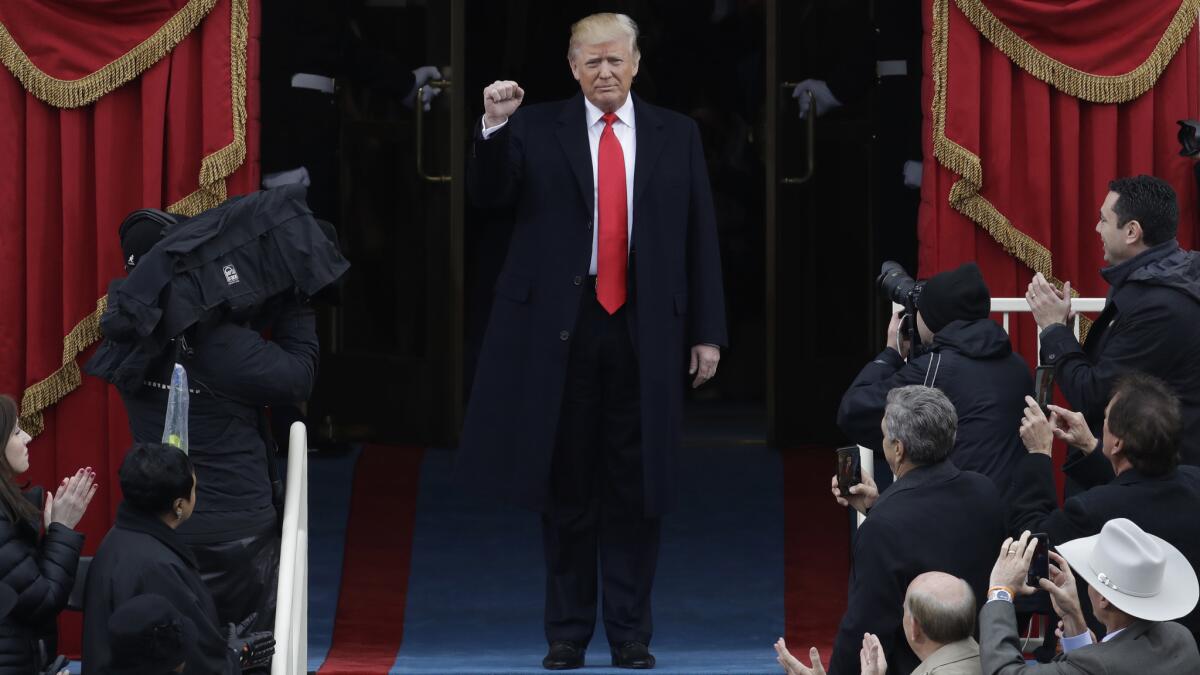
- Share via
WASHINGTON — The last few years can feel like a blur.
Days usually began with an explosion of tweets, followed by a barrage of leaks, lies and bluster. Evenings often brought marathon campaign rallies or rambling news conferences, with a final flurry of tweets pinging into the darkness.
That’s been America under President Trump, a leader who craves attention even more than power and relishes outrage over convention. For millions of his fans, Trump’s tenure in office has been exhilarating. For millions of others, it has been a nightmare. For nearly everyone, it has been exhausting.
Amid the nonstop controversies, a handful of moments stood out. Each was emblematic of a president who sought to inflame tensions rather than soothe them. Each left unforgettable images or language that roiled the nation. Each proved a turning point.
These are the moments where we learned the most about the 45th president and the way he led us.
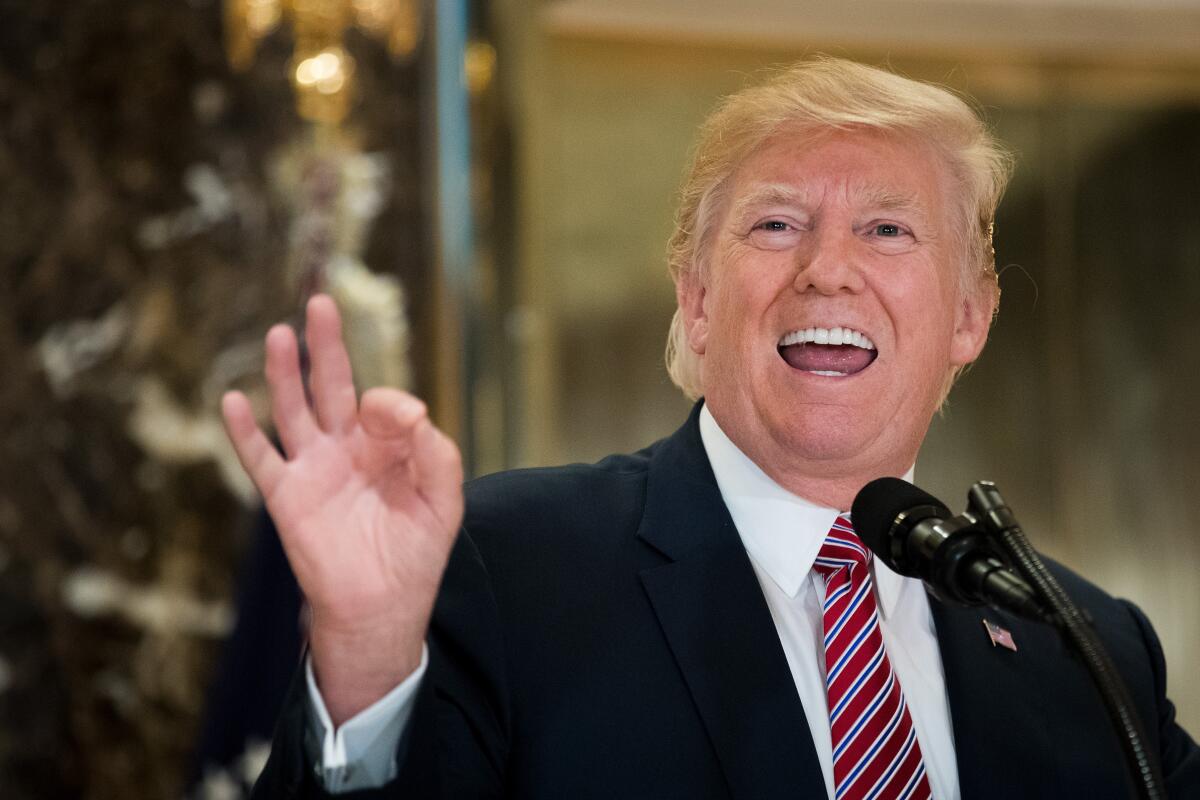
Charlottesville
Aug. 15, 2017
President Trump was supposed to talk about rebuilding the country’s aging roads and bridges when he stepped up to the microphones in the lobby of Trump Tower, his Manhattan skyscraper.
But reporters demanded to know why Trump was so slow to condemn racist violence in Charlottesville, Va. On Aug. 11, hundreds of neo-Nazis and white nationalists had waved torches and chanted bigoted and anti-Semitic slogans at a rally to oppose removal of a Confederate statue.
The next day, they fought with counter protesters, injuring dozens, and a self-identified white supremacist plowed his car into a crowd, killing a young woman.
Trump had equivocated at first, criticizing the “hatred, bigotry and violence on many sides.” Under political fire even from fellow Republicans for not singling out white supremacy, Trump read aloud a prewritten statement at the White House two days later, declaring that “racism is evil.”
The president’s wooden delivery did little to quell the controversy, and reporters in New York hurled questions at him once he finished his remarks about infrastructure. Trump refused to admit to any mistakes and retreated to his original position on Charlottesville.

“I watched those closely, much more closely than you people watched it. You had a group on one side that was bad and you had a group on the other side that was also very violent. Nobody wants to say it, but I will say it right now.”
He continued: “You had some very bad people in that group. But you also had people that were” — he paused to ponder what to say next — “very fine people, on both sides.”
Trump had a long record of bigoted comments and behavior as a builder in New York and during his 2016 campaign. But his praise for the “very fine people, on both sides” in Charlottesville, and his refusal to disavow racist violence at a moment of national crisis, came to symbolize a presidency that repeatedly challenged American values.
Two years later, when Joe Biden formally announced his presidential campaign, the Democrat singled out Trump’s comments on Charlottesville as the reason to remove him from office.
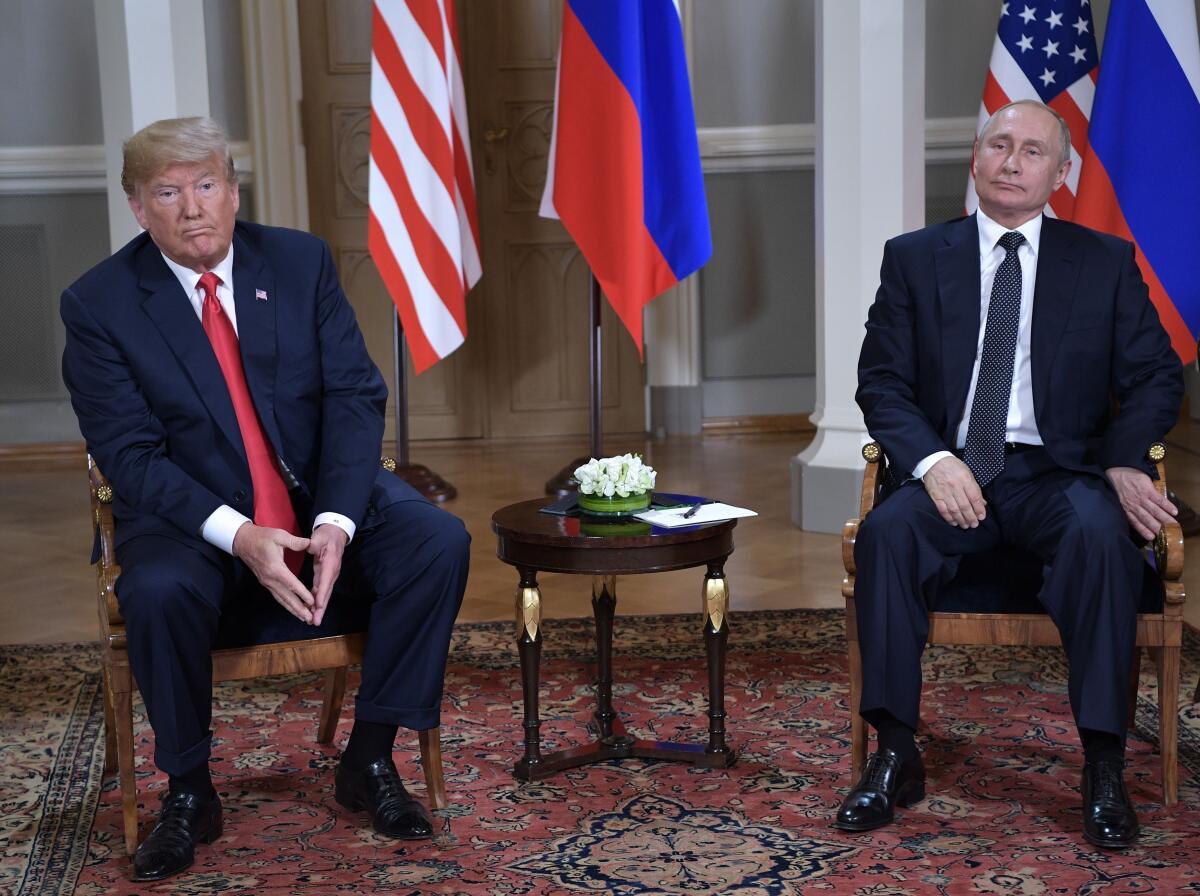
Helsinki
July 16, 2018
The Russia investigation was still underway when President Trump decided to meet one-on-one with Russian President Vladimir Putin in Helsinki, Finland.
Trump didn’t cancel the summit when, three days before, special counsel Robert S. Mueller III charged a dozen Russian military intelligence officers with hacking and leaking Democratic Party emails during the 2016 election. Nor did he ask for a rain check when Dan Coats, his national intelligence director, warned that Russian authorities “continue their efforts to undermine our democracy.”
The summit got off to a bad start when Trump and Putin met for nearly two hours with only translators present, not the usual aides who staff such discussions. U.S. national security officials sweated outside the doors, fretting that Trump would be rolled by the Russian leader, a former KGB spy with a reputation as a skilled manipulator. Trump was often fawning toward dictators, but Putin seemed to hold a special sway over him.
When the two leaders emerged, those fears were confirmed. Trump said he “addressed directly” the Russian political meddling in the U.S. election, but he said nothing to condemn the behavior. He also complained that the Mueller investigation into the Russian operation was undermining his attempts to repair U.S. relations with Moscow.
“It’s ridiculous what’s going on with the probe,” Trump said.

A reporter put Trump on the spot. Did he believe the unanimous view of U.S. intelligence agencies that Russia had interfered in his election? And would he tell Putin not to do it again, “with the whole world watching?”
Trump didn’t even pause. He sided with Putin.
“My people came to me — Dan Coats came to me and some others — they said they think it’s Russia. I have President Putin; he just said it’s not Russia,” Trump said. “I will say this — I don’t see any reason why it would be.”
The president’s willingness to believe a foreign adversary over the evidence gathered by U.S. intelligence and law enforcement sent a chill through national security agencies and Washington’s allies.
Mueller ultimately did not establish a criminal conspiracy between Trump’s campaign and the Kremlin. Trump’s subservience to Putin went unexplained, but the pattern repeated itself this summer. U.S. intelligence agencies concluded that Russia was trying to boost Trump’s reelection campaign by targeting Biden.
Trump’s response? “I don’t care what anybody says.”
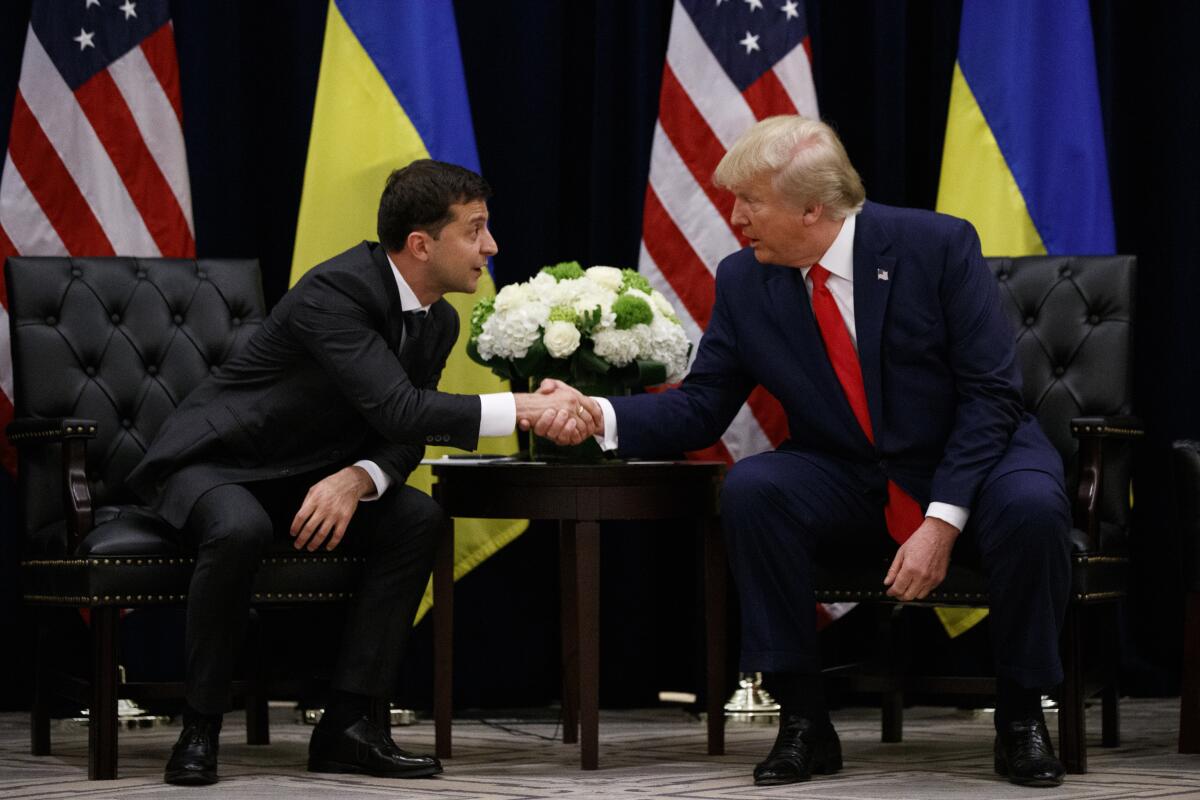
Perfect phone call
July 25, 2019
It was only 9:03 a.m., so Trump was still in the White House residence when he picked up the phone to speak with Volodymyr Zelensky, the newly elected leader of Ukraine, the former Soviet satellite turned U.S. ally.
In some ways, Zelensky was a lot like Trump — a political novice who won an election by crusading against out-of-touch elites. So he started the conversation with flattery, echoing Trump’s campaign slogan.
“We wanted to drain the swamp here in our country,” Zelensky said. “You are a great teacher for us.”
He then asked for help. Ukraine had been battling Russian-backed forces invading from the east, and he wanted to purchase more U.S. anti-tank missiles.
Trump had something else on his mind. The day before, Mueller had testified about Russia’s illegal support for Trump’s 2016 campaign. Now the president wanted help from another foreign country, one depending on U.S. aid for its very survival.
“I would like you to do us a favor though,” Trump replied.
Trump asked Ukraine’s leader to investigate Biden who spearheaded U.S. policy toward Ukraine when he served as President Obama’s vice president. Biden had pushed for the dismissal of a top Ukrainian prosecutor who was widely viewed as corrupt, but Trump believed Biden might have acted corruptly himself because his son, Hunter, was on the board of a Ukrainian gas company that was under scrutiny.
“There’s a lot talk about Biden’s son, that Biden stopped the prosecution and a lot of people want to find out about that,” Trump said. He added: “It sounds horrible to me.”

As is usual for a presidential call with a foreign leader, a handful of senior aides listened in from the White House Situation Room and took notes. Word quickly spread about Trump’s unusual request for Zelensky, and an intelligence official soon filed a whistleblower complaint.
Under pressure, the White House released a written summary of the 30-minute phone call, revealing Trump’s blatant efforts to use American foreign policy for partisan, personal gain — to discredit a political rival and to help him win reelection.
Trump called the conversation “perfect.” But it will permanently tar his legacy.
On Dec. 18, the Democratic-led House of Representatives approved articles of impeachment on charges of abuse of power and obstruction of Congress, making Trump only the third U.S. president ever impeached. The Republican-controlled Senate later voted to acquit, letting Trump remain in office.
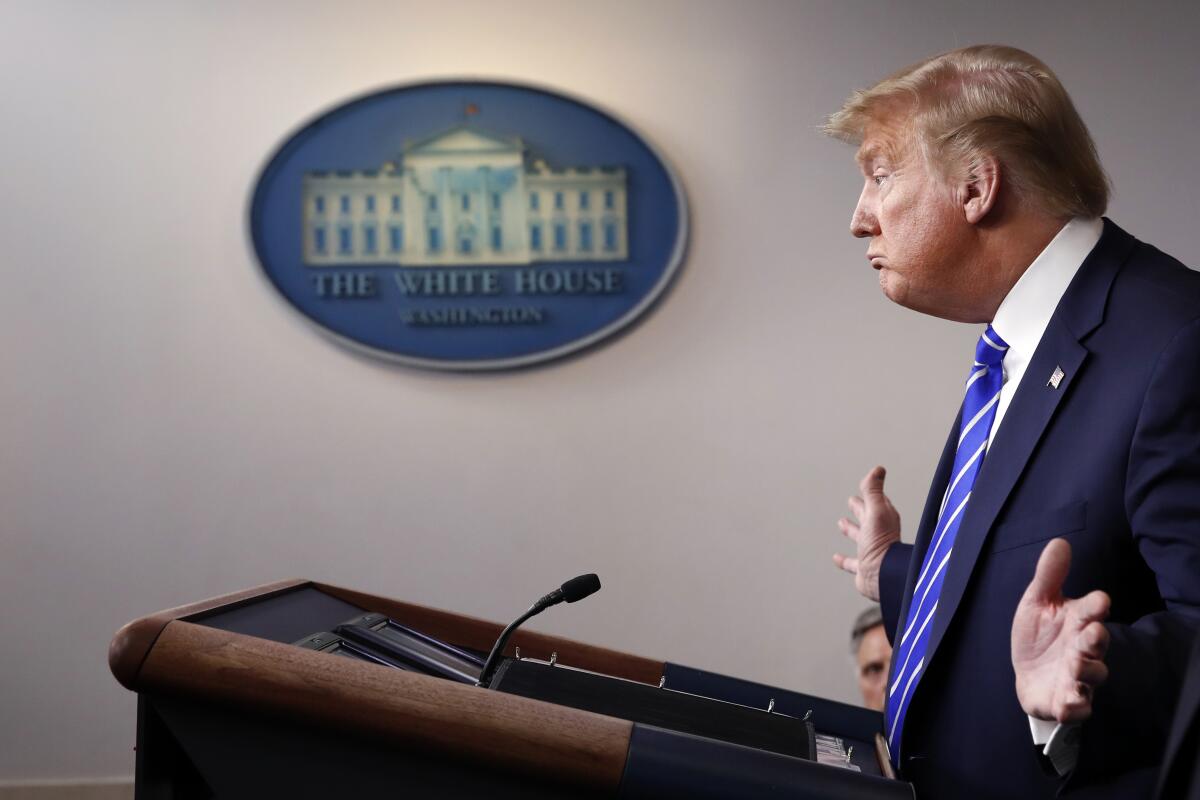
Disinfectant injections
April 23, 2020
More than 50,000 Americans had died from the coronavirus outbreak, but Trump wanted to talk about good news.
William Bryan, a science and technology advisor at the Department of Homeland Security, had told him earlier in a private meeting that ultraviolet light and disinfectants could be used to kill the virus on various surfaces.
So Bryan was invited to appear beside the president, who had turned the White House briefing room into a miniature rally stage now that the pandemic had choked off opportunities for large campaign events.
For weeks, Trump had downplayed the danger of COVID-19, insisting the disease was under control or would just go away. He had offered no national plan for testing or contact tracing. Instead he blamed others for the worst public health emergency in a century and the worst unemployment since the Great Depression, saying at one point that “I don’t take responsibility at all.”
Now he was urging states to reopen and help revive an economy in free fall and a reelection campaign in trouble.
After Bryan explained his research at the podium, Trump decided to share what he called a “very interesting” idea.

“So supposing we hit the body with a tremendous — whether it’s ultraviolet or just very powerful light — and I think you said that that hasn’t been checked, but you’re going to test it,” Trump said.
“And then I said, ‘Supposing you brought the light inside the body,’ which you can do either through the skin or in some other way, and I think you said you’re going to test that too.”
Bryan indulged the president, saying he would get the “right folks” on that. Buoyed by the response, Trump continued.
“Then I see the disinfectant, where it knocks it out in a minute. One minute,” the president said. “And is there a way we can do something like that, by injection inside or almost a cleaning? Because you see it gets in the lungs and it does a tremendous number on the lungs.”
It wasn’t the first time that Trump had defied science in the pandemic. He had refused to wear a mask, as health officials recommended, and he repeatedly touted hydroxychloroquine as a treatment the coronavirus even though the antimalarial drug could pose dangerous side effects.
But his suggestion that people could inject toxic household cleaning products into the body crystalized his failure to show empathy or provide coherent leadership during a devastating health crisis.
As ridicule and warnings poured in from doctors, public health agencies and even the makers of Clorox and Lysol, Trump stopped his televised coronavirus briefings. He resumed them three months later, on July 21, in a bid to revive his sagging poll numbers.
The U.S. death toll currently exceeds 176,000.
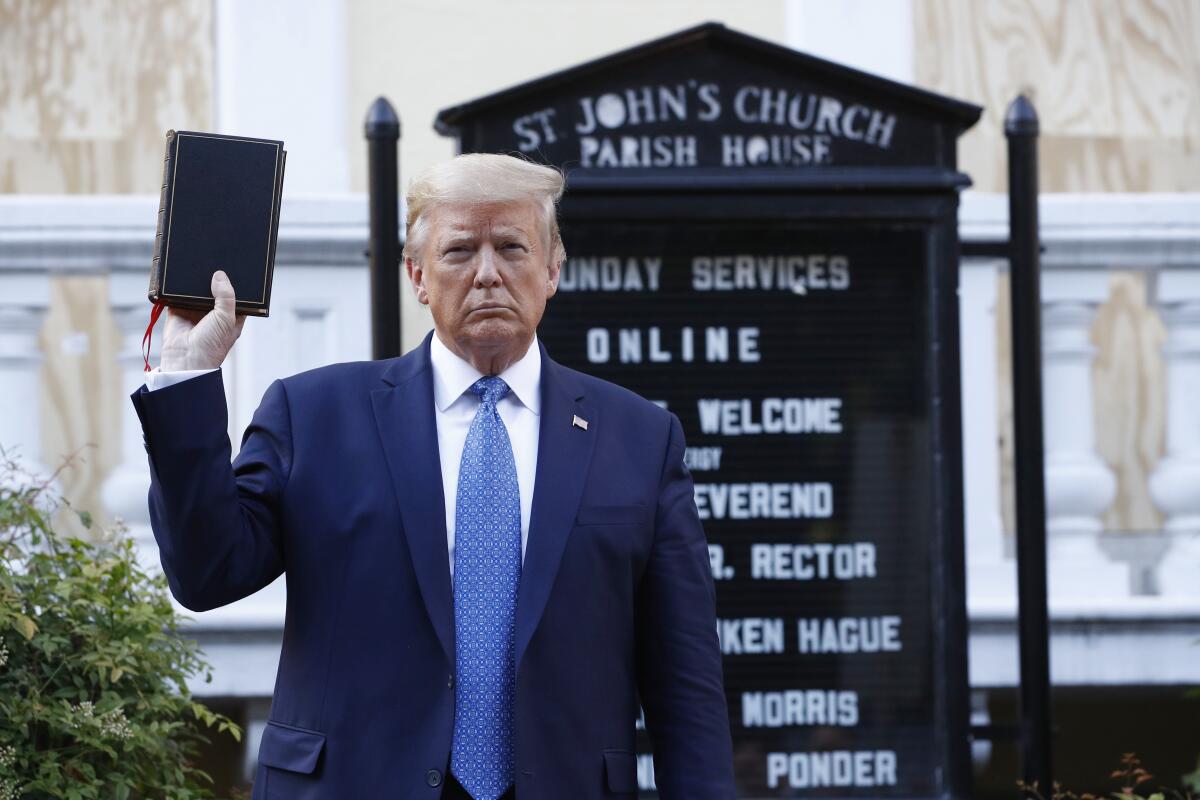
Lafayette Square
June 1, 2020
Trump was eager for a fight. On a conference call that morning, he had blasted the nation’s governors as “weak” and urged them to “dominate” the mostly peaceful protests that had erupted across the country after an unarmed Black man, George Floyd, was killed by police in Minneapolis on Memorial Day.
That afternoon, the White House abruptly summoned the media to the Rose Garden for an announcement. Loud booms could be heard from just outside the White House grounds.
Heavily armed officers from a range of federal agencies were charging protesters at the edge of Lafayette Square. Some officers fired pepper ball rounds, which are filled with chemical irritants. Noxious smoke drifted in the streets and screaming echoed off downtown office buildings.
The chaos was still underway as Trump stepped to his podium.
On one side of the television screen, police were swinging batons and riot shields. On the other, Trump was declaring himself “your president of law and order.” He threatened to deploy U.S. combat troops if local leaders didn’t put down protests across the country.
The president ended with a cliffhanger. “And now I’m going to pay my respects to a very, very special place,” he said.

Days earlier, Trump had been embarrassed by reports that he and his family had been rushed to an underground bunker as protests raged outside the White House gates. Now he wanted to show strength.
He walked out of the White House and across Lafayette Square, which was strewn with debris and graffiti, to St. John’s Church. Its windows had been boarded up after a recent fire.
Someone handed Trump a Bible. Instead of opening it to read loud or pray, he turned it in his hands and held it stiffly aloft. “Is that your Bible?” he was asked. “It is a Bible,” he responded.
Trump spoke briefly, offering no comfort to those outraged by police brutality or systemic racism. “We have a great country. That’s my thoughts. Greatest country in the world.”
Then he beckoned over a few administration officials for a group photo.
Trump’s critics long have warned of his authoritarian tendencies — an affinity for foreign dictators, an unwillingness to tolerate dissent or even mild criticism, and an eagerness to threaten violence against his enemies, real or perceived.
Those fears converged in a photo op on Lafayette Square.
More to Read
Get the L.A. Times Politics newsletter
Deeply reported insights into legislation, politics and policy from Sacramento, Washington and beyond. In your inbox twice per week.
You may occasionally receive promotional content from the Los Angeles Times.











